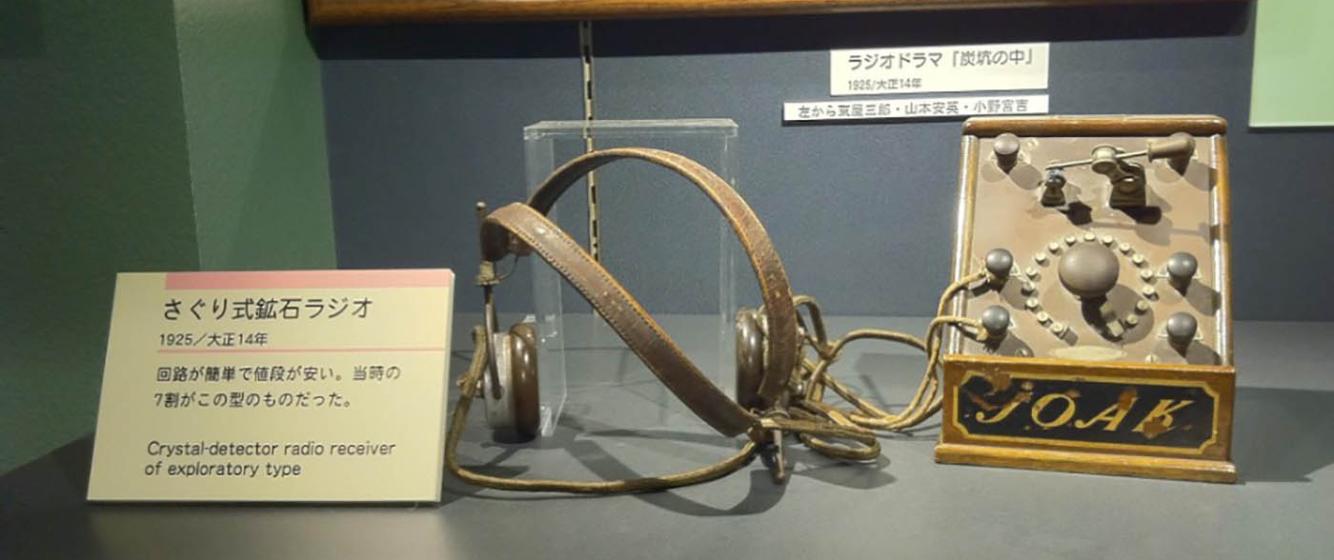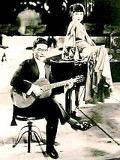
Crystal Detector Radio Receiver, @1925 when JOAK began broadcasting in Tokyo. Ysuke Kawasaki, CC BY 2.0, via Wikimedia Commons
Radio Killed the Record Star
The title of this blog post comes from a 1979 song by The Buggles titled “Video Killed the Radio Star.” It’s an eerily appropriate song, even today. A synthesized piano pounds out a carnivalesque tune. The words are a requiem to the pop stars of a bygone era as measured by the dominant technology. For The Buggles, that bygone technology was radio.
The opening words go:
I heard you on the wireless back in fifty-two
Lying awake intent at tuning in on you
If I was young it didn't stop you coming through
Oh, a, oh
They took the credit for your second symphony
Rewritten by machine on new technology
And now I understand the problems you can see
(The Buggles, 1979)
The song is full of nostalgia – but it is full of truth as well. Popular music has always been dependent upon constantly changing recording technology. In this post, I want to talk about the new technology of the 1920s, about a century ago in Japan. In that era, one could say that “radio killed the record star.” Records remained the dominant recording and music preservation technology. But for distribution, radio came to dominate by the 1940s or even earlier.
One of the memories that Japanese songwriter Koga Masao shared in his autobiography happened at RCA during his peace and goodwill tour of the United States in 1938. The RCA station in Los Angeles broadcast several of his songs as played by their studio orchestra. “Sake wa namida ka tameiki ka” (Is sake tears or sighs?) was heard live on their evening broadcast. RCA Orchestra musicians praised his compositions. Koga was thrilled.

日活, Public domain, via Wikimedia Commons
Koga Masao and Kawabata Fumiko, date unknown.
Japan joined the radio era with its first public broadcast from Tokyo by JOAK in March, 1925. Until 1926, only three radio stations, one each in Tokyo, Osaka, and Nagoya, had licenses to broadcast, and their content was strictly controlled. Censorship of broadcasts included music. Programming was primarily news and stock market updates. Evenings included educational talks by recognized experts in various fields and some music. The government limited music to Western classical, and Japanese traditional forms of music. On weekends, content for children, including children's songs, also went on the air.
Radio was not ubiquitous in 1925 when it debuted. Most people had no way to listen, and those that did were concentrated mostly in the cities. Between 1925 and 1932, growth in listeners was slow, with only 25.7 percent of urban households at the end of that period owning a radio and a listening license. In 1925, and up to the Second World War, most people listened via crystal radio receivers, many of them home-built. Because they used only the power available in the radio waves, these crystal sets required listening via headphones. Because the broadcast power of most early stations was low, coverage was uneven.
As a result, only 4.5 percent of rural households could tune in. However, this technology allowed simultaneous broadcasts to the rapidly growing urban population of Japan. It is also true that Japan’s population was transient - because of the Great Kanto Earthquake of 1923, which had been the primary stimulus for the development of radio, Osaka had a greater population than Tokyo, and radio helped disseminate information to migrating Japanese.
Radio, for the growing numbers of listeners, was popular. One key popular music producer, Nakayama Shimpei, recognized the importance of radio immediately. In July of 1925, he joined a broadcast on JOAK, Japan’s first radio station. Along with singers Satō Chiyako and Noguchi Ujō, he performed some of his dōyō songs (children's songs). At the time, radio was so new that it functioned as a national curiosity as much as an information source. Listeners tuned in whenever they could, and did not discriminate in terms of what programs they preferred. Nakayama was an astute player in the popular music business. He knew that his songs sold mostly in the cities, and he knew that listeners would hear his children’s songs and rather than tune out, they would recognize his name. So radio was a good fit. He stuck to the government censors’ rules and avoided any adult popular songs, dutifully performing dōyō as the program called for.
Following these rules was not a natural act for him. Nakayama was never happy with government censorship policies and had on many occasions publicly criticized the censorship rules, and the way that the censors interpreted and applied them to his performances. But he set that aside in this case. His decision to broadcast dōyō aligned with his vision of how to please his listeners. Broadcasting dōyō provided listeners with nostalgia for their childhood without breaking censorship rules. Even though NHK ruled out his popular records, the dōyō were new. They reminded listeners of their childhood experiences. Nakayama used that nostalgia to make all his songs sell. The strategy worked.
”Blowing bubbles”-One of Nakayama Shimpei’s most famous dōyō (songs for children).
The radio audience was mostly adults. Children could not purchase a radio set or a listening license. The songs broadcast on weekends may have reached some children, but mostly they reached adults. Since they were children’s songs,they were officially viewed as educational - outside of for-profit business. That perception gave Nakayama a whiff of moral purity. In other words, the children's songs associated him with sincerity. That reputation transferred itself to his commercial songs as well and increased sales. Given his experience with recording, marketing, and performance, Nakayama knew this. He must have hoped that his 1925 broadcast was the cutting edge in music distribution. It provided new business opportunities. It gave him new ways of reaching his audience.
The listening public was aware, too. As radio continued to grow, and its value for information dissemination and propaganda increased, the Japanese government, in what appeared to be a fit of liberalization, eventually began allowing the broadcasting of folk songs and adult popular songs, as well as military marches. As NHK loosened its rules over time, they gave the popular songs they heard on the radio a new name: kayōkyoku. Although in practice this genre included many older songs, kayōkyoku became the accepted genre name for pop songs heard on the radio after 1925. Most of the songs that were broadcast also fit in with the ideological positions of the government, but the genie was out of the bottle - if you weren’t on the radio by the 1940s, you weren’t selling many records. Record sales became dependent on radio airplay, and radio killed the record star.
Add new comment